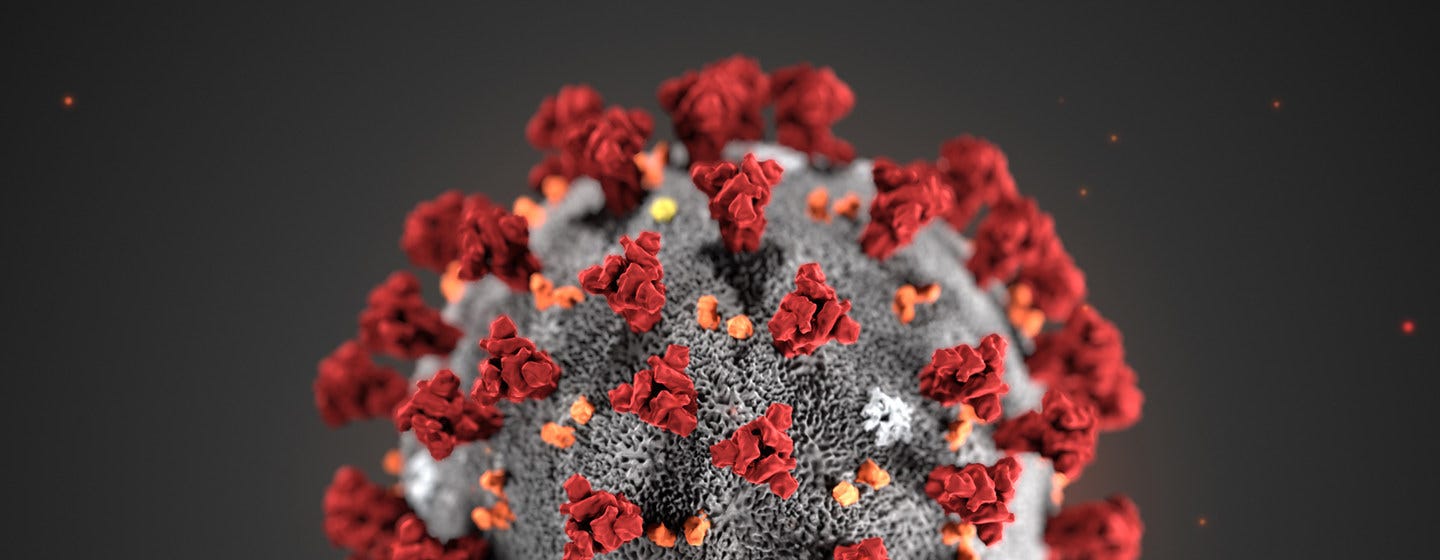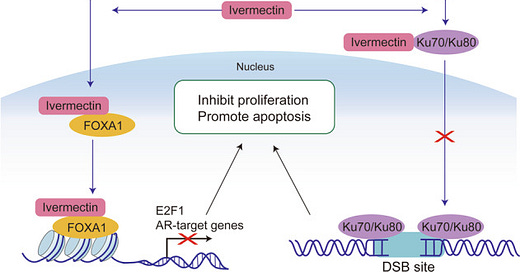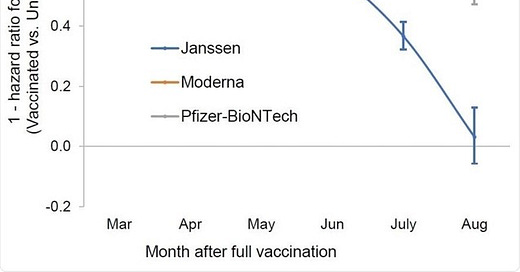
Myocarditis from SARS-CoV-2 Vaccination is Caused by Cell Fusion Caused Spike Protein
Key References with Abstracts
While articles from Reuters and Factcheck.org from June claim otherwise, yes, the SARS-CoV-2 virus can cause cell fusion… that is, the fusion of two different cells. That makes the spike protein itself pathogenic.
Due to the misinformation spread by Reuters and FactCheck.org, the denial of the risk of myocarditis following SARS-CoV-2 vaccination continues even now - and indeed seems to be ramping up. So I though I would share with you the key references that demonstrate cell-cell fusion (syncytia) and implicate the spike protein as a pathogenic molecule as the cause. That is, the protein, not the virus, is the pathogen.
Note that many of these reference implications for SARS-CoV-2 infection, but the same conclusion applies to injection: the mechanistic studies do not use the virus, they use virus-like-particles (VLPs) with spike protein on the surface. Thus, the findings and conclusions of such studies apply equally well to vaccines that induce spike protein.
With conclusions such as “The SARS-CoV-2 spike protein can directly produce cellular damage” and “These data indicate that SARS-CoV-2 may cause cardiac damage by fusing cardiomyocytes”, the continued denial of vaccine causality must end, the so-called Fact-Checkers (aka “Narrative Minders” - thank you M.K. for that) - should retract their articles and issue apologies to the families and individuals hurt by vaccine-induced myocarditis as a result of their misinformation campaigns.
1. Highly Efficient SARS-CoV-2 Infection of Human Cardiomyocytes: Spike Protein-Mediated Cell Fusion and Its Inhibition (Link)
Navaratnarajah CK, Pease DR, Halfmann PJ, Taye B, Barkhymer A, Howell KG, Charlesworth JE, Christensen TA, Kawaoka Y, Cattaneo R, Schneider JW; Wanek Family Program for HLHS-Stem Cell Pipeline. Highly Efficient SARS-CoV-2 Infection of Human Cardiomyocytes: Spike Protein-Mediated Cell Fusion and Its Inhibition. J Virol. 2021 Nov 23;95(24):e0136821. doi: 10.1128/JVI.01368-21. Epub 2021 Oct 6. PMID: 34613786; PMCID: PMC8610601.
Abstract
Severe cardiovascular complications can occur in coronavirus disease of 2019 (COVID-19) patients. Cardiac damage is attributed mostly to the aberrant host response to acute respiratory infection. However, direct infection of cardiac tissue by severe acute respiratory syndrome coronavirus 2 (SARS-CoV-2) also occurs. We examined here the cardiac tropism of SARS-CoV-2 in spontaneously beating human induced pluripotent stem cell-derived cardiomyocytes (hiPSC-CMs). These cardiomyocytes express the angiotensin-converting enzyme 2 (ACE2) receptor but not the transmembrane protease serine 2 (TMPRSS2) that mediates spike protein cleavage in the lungs. Nevertheless, SARS-CoV-2 infection of hiPSC-CMs was prolific; viral transcripts accounted for about 88% of total mRNA. In the cytoplasm of infected hiPSC-CMs, smooth-walled exocytic vesicles contained numerous 65- to 90-nm particles with canonical ribonucleocapsid structures, and virus-like particles with knob-like spikes covered the cell surface. To better understand how SARS-CoV-2 spreads in hiPSC-CMs, we engineered an expression vector coding for the spike protein with a monomeric emerald-green fluorescent protein fused to its cytoplasmic tail (S-mEm). Proteolytic processing of S-mEm and the parental spike were equivalent. Live cell imaging tracked spread of S-mEm cell-to-cell and documented formation of syncytia. A cell-permeable, peptide-based molecule that blocks the catalytic site of furin and furin-like proteases abolished cell fusion. A spike mutant with the single amino acid change R682S that disrupts the multibasic furin cleavage motif was fusion inactive. Thus, SARS-CoV-2 replicates efficiently in hiPSC-CMs and furin, and/or furin-like-protease activation of its spike protein is required for fusion-based cytopathology. This hiPSC-CM platform enables target-based drug discovery in cardiac COVID-19. IMPORTANCE Cardiac complications frequently observed in COVID-19 patients are tentatively attributed to systemic inflammation and thrombosis, but viral replication has occasionally been confirmed in cardiac tissue autopsy materials. We developed an in vitro model of SARS-CoV-2 spread in myocardium using induced pluripotent stem cell-derived cardiomyocytes. In these highly differentiated cells, viral transcription levels exceeded those previously documented in permissive transformed cell lines. To better understand the mechanisms of SARS-CoV-2 spread, we expressed a fluorescent version of its spike protein that allowed us to characterize a fusion-based cytopathic effect. A mutant of the spike protein with a single amino acid mutation in the furin/furin-like protease cleavage site lost cytopathic function. Of note, the fusion activities of the spike protein of other coronaviruses correlated with the level of cardiovascular complications observed in infections with the respective viruses. These data indicate that SARS-CoV-2 may cause cardiac damage by fusing cardiomyocytes.
2. Cell fusion as a link between the SARS-CoV-2 spike protein, COVID-19 complications, and vaccine side effects (Link)
Lazebnik Y. Cell fusion as a link between the SARS-CoV-2 spike protein, COVID-19 complications, and vaccine side effects. Oncotarget. 2021 Dec 7;12(25):2476-2488. doi: 10.18632/oncotarget.28088. PMID: 34917266; PMCID: PMC8664391.
Abstract
A distinctive feature of the SARS-CoV-2 spike protein is its ability to efficiently fuse cells, thus producing syncytia found in COVID-19 patients. This commentary proposes how this ability enables spike to cause COVID-19 complications as well as side effects of COVID-19 vaccines, and suggests how these effects can be prevented.
3. B-AB18-03 SARS-COV-2 DIRECT CARDIAC DAMAGE THROUGH SPIKE-MEDIATED CARDIOMYOCYTE FUSION MAY CONTRIBUTE TO INCREASED ARRHYTHMIC RISK IN COVID-19 (Link)
Abstract
Clemens DJ, Ye D, John Kim C, et al. B-AB18-03 SARS-COV-2 DIRECT CARDIAC DAMAGE THROUGH SPIKE-MEDIATED CARDIOMYOCYTE FUSION MAY CONTRIBUTE TO INCREASED ARRHYTHMIC RISK IN COVID-19. Heart Rhythm. 2021;18(8):S35. doi:10.1016/j.hrthm.2021.06.104
Background
SARS-CoV-2-mediated COVID-19 can affect the heart and cause sudden cardiac death (SCD). Multiple factors contribute to this increased risk of potentially fatal arrhythmias including thrombosis, exaggerated immune response, and treatment with QT-prolonging drugs. However, the intrinsic arrhythmic potential of direct SARS-CoV-2 infection of the heart is unknown.
Objective
To assess the cellular and electrophysiological effects of direct SARS-CoV-2 infection of the heart using induced pluripotent stem cell-derived cardiomyocytes (iPSC-CMs).
Methods
iPSC-CMs were either infected with SARS-CoV-2 or transfected with recombinant SARS-CoV-2 spike protein (S). Viral replication and iPSC-CM morphology were visualized by electron and confocal microscopy respectively. Action potential duration (APD) and cellular arrhythmias were measured by whole cell patch-clamp. Ca2+ handling was assessed by live cell imaging using the Fluo-4 Ca2+ indicator.
Results
Following infection with SARS-CoV-2, iPSC-CMs expressed viral proteins and displayed efficient virus production. Infected cells produced multinucleated giant cells called syncytia resulting from cell-cell fusion. Interestingly, S-transfected iPSC-CMs also produced syncytia indicating fusion is S-mediated. SARS-CoV-2 S-induced syncytia displayed increased cellular capacitance (75±7 pF, n=10 vs. 26±3 pF, n=10; P<0.0001) consistent with increased cell size. The APD90 was prolonged significantly from 419±26 ms (n=10) in untransfected iPSC-CMs to 590±67 ms (n=10; P<0.05) in S-transfected iPSC-CMs. Additionally, these syncytia displayed delayed afterdepolarizations and erratic beating frequency. Ca2+ imaging revealed Ca2+ handling abnormalities in S-induced syncytia including Ca2+ sparks and, most notably, large “tsunami”-like waves. After either treating with a furin protease inhibitor or mutating the S furin cleavage site, cell-cell fusion was no longer evident and Ca2+ handling returned to normal.
Conclusion
The SARS-CoV-2 spike protein can directly produce cellular damage and electrophysiological dysfunction in infected cardiac cells which may confer the intrinsic, mechanistic susceptibility for the increased risk of SCD observed in COVID-19.
4. The SARS-CoV-2 Spike protein disrupts human cardiac pericytes function through CD147 receptor-mediated signalling: a potential non-infective mechanism of COVID-19 microvascular disease (Link)
Avolio E, Carrabba M, Milligan R, Kavanagh Williamson M, Beltrami AP, Gupta K, Elvers KT, Gamez M, Foster RR, Gillespie K, Hamilton F, Arnold D, Berger I, Davidson AD, Hill D, Caputo M, Madeddu P. The SARS-CoV-2 Spike protein disrupts human cardiac pericytes function through CD147 receptor-mediated signalling: a potential non-infective mechanism of COVID-19 microvascular disease. Clin Sci (Lond). 2021 Dec 22;135(24):2667-2689. doi: 10.1042/CS20210735. PMID: 34807265; PMCID: PMC8674568.
Abstract
The severe acute respiratory syndrome coronavirus 2 (SARS-CoV-2) causes a broad range of clinical responses including prominent microvascular damage. The capacity of SARS-CoV-2 to infect vascular cells is still debated. Additionally, the SARS-CoV-2 Spike (S) protein may act as a ligand to induce non-infective cellular stress. We tested this hypothesis in pericytes (PCs), which are reportedly reduced in the heart of patients with severe coronavirus disease-2019 (COVID-19). Here we newly show that the in vitro exposure of primary human cardiac PCs to the SARS-CoV-2 wildtype strain or the α and δ variants caused rare infection events. Exposure to the recombinant S protein alone elicited signalling and functional alterations, including: (1) increased migration, (2) reduced ability to support endothelial cell (EC) network formation on Matrigel, (3) secretion of pro-inflammatory molecules typically involved in the cytokine storm, and (4) production of pro-apoptotic factors causing EC death. Next, adopting a blocking strategy against the S protein receptors angiotensin-converting enzyme 2 (ACE2) and CD147, we discovered that the S protein stimulates the phosphorylation/activation of the extracellular signal-regulated kinase 1/2 (ERK1/2) through the CD147 receptor, but not ACE2, in PCs. The neutralisation of CD147, either using a blocking antibody or mRNA silencing, reduced ERK1/2 activation, and rescued PC function in the presence of the S protein. Immunoreactive S protein was detected in the peripheral blood of infected patients. In conclusion, our findings suggest that the S protein may prompt PC dysfunction, potentially contributing to microvascular injury. This mechanism may have clinical and therapeutic implications.
5. SARS-CoV-2 direct cardiac damage through spike-mediated cardiomyocyte fusion (Link)
Schneider J, Pease D, Navaratnarajah C, et al. SARS-CoV-2 direct cardiac damage through spike-mediated cardiomyocyte fusion. Research Square; 2020. DOI: 10.21203/rs.3.rs-95587/v1.
Abstract
Viruses spread between hosts through particles, but within hosts, viral genomes can spread from cell to cell through fusion, evading antiviral defenses and obviating costly infectious virion production1-3. Billions of electromechanically coupled cardiomyocytes (CMs) make myocardium inherently vulnerable to pathological electromechanical short circuits caused by intercellular viral spread 4-6. Beyond respiratory illness, COVID-19 affects the heart7 and cardiac injury and arrhythmias are serious public health concerns8-12. By studying myocardium of a young woman who died suddenly, diagnosed postmortem with COVID-19, we discovered highly focal myocardial SARS-CoV-2 infection spreading from one CM to another through intercellular junctions identified by highly concentrated sarcolemmal t-tubule viral spike glycoprotein. SARS-CoV-2 permissively infected beating human induced pluripotent stem cell (hiPSC)-CMs building multinucleated cardiomyotubes (CMTs) through cell type-specific fusion driven by proteolytically-activated spike glycoprotein. Recombinant spike glycoprotein, co-localizing to sarcolemma and sarcoplasmic reticulum, produced multinucleated CMTs with pathological structure, electrophysiology and Ca2+ excitation-contraction coupling. Blocking cleavage, a peptide-based protease inhibitor neutralized SARS-CoV-2 spike glycoprotein pathogenicity. We conclude that SARS-CoV-2 spike glycoprotein, efficiently primed, activated and strategically poised during biosynthesis, can exploit the CM’s inherent membranous connectivities to drive heart damage directly, uncoupling clinically common myocardial injury from lymphocytic myocarditis, often suspected but rarely confirmed in COVID-19.













My common sense along with your findings and that of other scientists and doctors Informed me that I should never inject a toxic spike protein into my body to play Russian roulette with my ACE2 receptors. After actively protecting my health for decades and following and avoiding pharmaceutical breakthroughs, there was no way I would participate in this clinical experiment.
Interesting thanks.
I wonder how many deaths the misinformation has caused?
https://nakedemperor.substack.com/